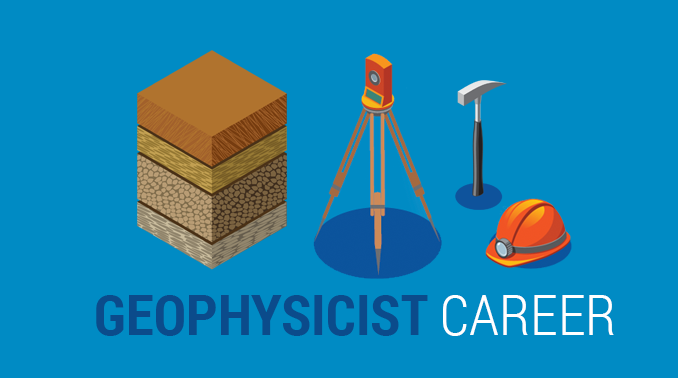All Categories
Featured
Table of Contents
Geophysical Engineerskills And Knowledge in Como Australia 2023

Other possible geophysicist majors that aren't geophysics or geoscience include: Atmospheric sciences and meteorology Chemical and physical oceanography Earth science Environmental science Hydrology and water resources science Products science By earning any geophysicist degree, and by taking the needed geology courses, you need to receive an entry-level position as a geoscientist or geophysicist.
Ultimately, trainees should find out: a branch of geology that takes a look at the different aspects of minerals, including chemical composition, internal crystal structure, and physical homes. the study of rocks and the procedures and conditions that form and transform them with time. There are a few neighborhoods in this branch of geology, consisting of igneous, metamorphic, and sedimentary rocks.

This field analyzes structural rock features such as cleavage, faults, joints, and little folds. They should also learn the computer skills necessary to: examine data create digital designs and maps operate geoscientists' software application Students should also benefit from all opportunities to gain real-world experience. Ambitious geophysicists should expect to hang out knowing: in the classroom in the field in laboratories Obviously, skills taught in the class are very important for aspiring geophysicists.
Geophysical Surveys in Murdoch Aus 2020
Geoscientists invest a lot of their time outside when working in the field, so they need to possess "outside abilities" like camping and running boats, airplane, and other cars. Since they spend so much time in remote places, it's necessary that geophysicists likewise have the physical stamina to bring necessary devices on their walkings to places of research study.
The job provides: a high median and leading incomes a high rate of individual fulfillment amongst geophysicists low work stress favorable task outlook Further info on revenues capacity and job outlook is detailed listed below. For students looking to land an entry-level function as a geoscientist or geophysicist, it takes four years, or the time required to complete a bachelor's degree in geophysics or an associated discipline.
Some research positions in geophysics require doctoral degrees. If you plan to teach at a college or university, you need to make a Ph. D. in geophysics or an associated field. The time it takes to earn a Ph. D. varies by institution and program, but it usually takes 4 to six years beyond the bachelor's degree.
Bachelor's Degree In Geophysics - Degrees & Programs in Middle Swan Oz 2023
The majority of companies require candidates to have a bachelor's degree in geophysics or a carefully associated discipline for all entry-level positions. As a result, there's no method around the degree requirements for becoming a geophysicist.
Presently, 31 states need licensing for geologists, although licensing is not constantly required, especially for entry-level work. The states that do issue licenses utilize the Principles of Geology Exam (FGE), which is administered through the National Association of State Boards of Geology (ASBOG). Now that you know which degree for geophysicist tasks you need, you'll need to land a task, and it is necessary to learn how much money you can make in this profession.
According to BLS, the typical annual wage for geoscientists is $93,580. According to BLS, certain industries provide greater wages for geoscientists, and in some cases, they offer higher-than-average earnings.
Why Study Geophysics? in Parmelia Australia 2020
In truth, mining, quarrying, and oil and gas extraction uses over $32,000 more every year than the typical yearly wage for this profession. The federal government, too, offers over $10,000 more in earnings than the nationwide average for geoscientists. In addition to market type, geographical place can considerably impact incomes for this profession.

The top-paying states and their yearly mean earnings, according to the BLS, consist of: Texas $166,720 Oklahoma $149,630 Pennsylvania $120,590 Hawaii $120,130 Colorado $107,260 These five top-paying states offer much greater incomes than the average for this occupation. Wages for geoscientists in Texas are over $73,000 greater than the national average.
It should come as no surprise that the majority of these high-paying areas are in Texas and Oklahoma, but some are discovered in California, Louisiana, and Colorado. The top 10 highest-paying city locations for geoscientists are: Houston-The Woodlands-Sugar Land, Texas: $188,400 Tulsa, Oklahoma: $186,490 Midland, Texas: $167,040 Odessa, Texas: $147,080 Oklahoma City, Oklahoma: $145,350 Bakersfield, California: $130,080 Urban Honolulu, Hawaii: $124,470 New Orleans-Metairie, Louisiana: $121,030 Washington-Arlington-Alexandria, DC, VA, MD, WV: $120,180 Denver-Aurora-Lakewood, Colorado: $116,910 For some geoscientists and geophysicists, residing in a metro city is not as appealing as living in a smaller neighborhood.
Latest Posts
Geophysical Survey Definition in Bayswater Oz 2023
Geophysical Surveys: Definition & Methods in Ardross Australia 2020
What Is Geophysics And What Do Geophysicists Do? in Maddington WA 2023